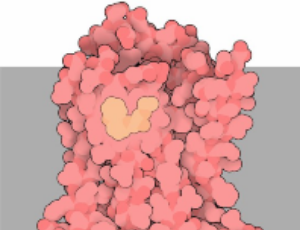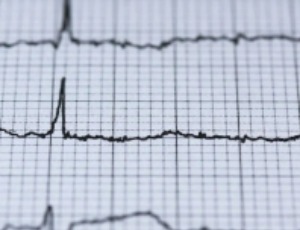Loading
Journal of Clinical Cardiology
ISSN: 2694-5088


Richard Kones
Cardiometabolic Research Institute, USA
Featured Article
Beta 3-Adrenergic Receptor (β3-AR) Activation at the End of Sustained Ischemia and/or Early Reperfusion may Prove to be a Valuable Cardioprotective Strategy

Featured Article
Estimated Plasma Volume Status (ePVS) for Diastolic Heart Failure in the Intensive Care Unit: A Retrospective Cohort Study

Featured Article
COVID-19 Delays Presentation and Management of Acute Coronary Syndrome

About this Journal
Journal of Clinical Cardiology is aiming to stand out and publish remarkable findings in the major areas of cardiovascular medicine emphasizing on diagnostic, therapeutic and disease management sections. We are focusing on quality outcomes of relevant research that will empower the field of clinical cardiology in various ways. Our expert editorial panel will evaluate all articles and effective suggestions will be provided to all articles submitted to the journal.
Articles
Ticagrelor-Associated Central Sleep Apnea: A Case Report and Review of the Literature
Ticagrelor is an oral, third-generation reversible P2Y12 receptor antagonist used in the treatment of patients with atherosclerotic cardiovascular disease. Dyspnea is a well-recognized side effect of ticagrelor, typically occurring within hours to days after initiation. In most cases, the dyspnea is mild and resolves spontaneously without intervention. However, dyspnea can be significant and intolerable in some patients necessitating discontinuation of ticagrelor.
CT Coronary Angiography Vs Cardiac Catheterization and Risk of Acute Kidney Injury – Comparative Study
CT coronary angiography (CTCA) and invasive coronary angiography (ICA) are widely used to evaluate coronary artery disease (CAD). Both involve iodinated contrast, which may cause contrast-induced acute kidney injury (CI-AKI), particularly in high-risk patients. This study compared the incidence of AKI following CTCA versus ICA in hospitalized patients with symptomatic CAD.
Coronary CT Angiography and Assessment of Coronary In-Stent Restenosis—A Brief Report of Stent-Related Factors among Positive Angiographic Cases
In-stent restenosis (ISR) remains a significant concern in coronary artery disease management. This study aims to evaluate the efficacy of coronary computed tomography angiography (CCTA) in detecting ISR and to identify stent-related factors in a real-world patient population.
Utilization of Prognostic Protein Tests in the Investigation of Suspected Chronic Coronary Artery Disease
Guidelines-driven diagnostic investigations for suspicion of functionally relevant coronary artery disease (fCAD) are complex and expensive. Therefore, we evaluated whether a previously validated proteomic residual cardiovascular risk (RCVR) model could complement existing fCAD detection strategies by accurately identifying patients at high risk for an event and safely ruling out fCAD in low-risk patients.
Recurrent Prosthetic Valve Endocarditis Causing Pseudoaneurysm of the Mitral-aortic Intervalvular Fibrosa
Infective endocarditis (IE) refers to inflammation of the endocardium, which is the inner layer of the heart. One of the most significant risk factors for developing IE is bioprosthetic valves within the heart. IE can lead to formation of vegetations on the surfaces of heart valves, making treatment difficult with antibiotics alone, often requiring surgery.
In-hospital Mortality Trends Across the Pre-pandemic, Pandemic, and Post-pandemic Eras in Cardiovascular and Cerebrovascular Conditions: A Retrospective Cohort Study
The COVID-19 pandemic strained healthcare delivery, but its lasting impact on acute and chronic cardiovascular and cerebrovascular mortality remains unclear. We compared in-hospital mortality for ST-elevation myocardial infarction (STEMI), non-ST-elevation myocardial infarction (NSTEMI), ischemic stroke, and congestive heart failure (CHF) across pre-pandemic, pandemic, and post-pandemic eras.
Optimizing Stroke Prevention after AtriClip Left Atrial Appendage Occlusion: A Narrative Review of Anticoagulation Dilemmas and Imaging Needs
Atrial fibrillation (AF) is a major risk factor for ischemic stroke, with the left atrial appendage (LAA) being the predominant source of thrombi. Surgical LAA occlusion (LAAO) with devices like the AtriClip offers a mechanical alternative to long-term oral anticoagulation (OAC), particularly for patients at high bleeding risk or with OAC contraindications.
Association of Vitamin D Serum Levels with Clinical Outcomes in Patients with Acute Decompensated Heart Failure
Heart failure (HF) stands out as a major reason for hospital admissions. Vitamin D deficiency is also associated with a higher risk of cardiovascular diseases. Due to recent conflicting findings, this study aimed to investigate clinical outcomes based on serum vitamin D levels in hospitalized patients with HF.
Allopurinol for Prevention of Contrast-Induced Acute Kidney Injury in Patients Undergoing Percutaneous Coronary Intervention: A Randomized-Controlled Trial
Contrast-induced acute kidney injury (CI-AKI) is a potential complication following percutaneous coronary intervention (PCI), particularly in patients with pre-existing kidney conditions. Previous research has identified hyperuricemia as a predictor for CI-AKI. Allopurinol, a medication commonly used to manage hyperuricemia, also possesses anti-inflammatory properties. This study aims to assess the impact of adding allopurinol to hydration therapy on CI-AKI incidence in patients undergoing PCI.
Coronary Revascularization in the Era of Transcatheter Aortic Valve Replacement: Treat the Patient, Manage the Disease
Coronary artery disease continues to be the greatest cause of global mortality. The prevalence of coronary artery disease in patients with severe aortic stenosis varies widely, from 80% in extreme high-risk trials to only 15% in more recent low risk trials.
Bromodomain and Extra-Terminal Family Protein Inhibitors: A Potentially New Therapy for Heart Disease
Bromodomain-containing protein 4 (BRD4) is a member of the mammalian bromo- and extra-terminal domain (BET) protein family, which also comprises BRD2, BRD3, and testis-specific BRDt.
Insights of CECCY Trial: Should Troponin be the Target for Anthracycline Cardiotoxicity Prevention?
Advances in oncology such as better access to health care system, earlier cancer diagnosis and new chemotherapies have led to longer survival of oncologic patients over the last decades. However, this population is vulnerable to cardiovascular drug-related adverse events like cardiomyopathy, which leads to heart failure and impairs survival and quality of life.
The Value of the Left Atrial Appendage Orifice Perimeter of 3D Model Based on 3D TEE Data in the Choice of Device Size of LAmbre™ Occluder
Preoperative optimal selection of the occluder size is crucial in percutaneous left atrial appendage (LAA) occlusion, and the maximal width of the LAA orifice is the main reference index, however it cannot fully meet the practical operation requirements. We retrospectively analyzed three-dimensional (3D) transesophageal echocardiography (TEE) and computed tomography (CT) imaging dataset of the 41 patients who underwent LAA occlusion with LAmbre™ system.
Body Mass Index and Treatment Response in Patients with Cardiac Light-Chain Amyloidosis
Elevated body mass index (BMI) has been associated with an increased risk of cancer and has been shown to have a negative impact on survival in patients with breast, prostate, oral cancer, and leukemia. In plasma cell dyscrasias, obesity has not only been shown to be a risk factor for the development of multiple myeloma, but also has been associated with a higher rate of progression from monoclonal gammopathy of unknown significance (MGUS) to multiple myeloma, and if intervened on, has bee
Hypertrophic Cardiomyopathy and the Troponins: The Enigma Remains
Hypertrophic cardiomyopathy (HCM) is a heart muscle disorder and is the most common form of Mendelianinherited heart disease, affecting approximately 0.2% of the global population. In adults the disease is often inherited as an autosomal dominant trait caused by mutations, mainly in one of the 23 cardiac sarcomere protein genes.
Shaping the Future of Cardiac Wellness: Exploring Revolutionary Approaches in Disease Management and Prevention
Cardiovascular diseases (CVDs) remain a leading cause of morbidity and mortality worldwide. Effective prevention and management strategies are essential to reduce the burden of CVDs. This review summarizes recent advances in the prevention and management of CVDs. In terms of prevention, lifestyle modifications, such as diet, exercise, and smoking cessation, remain important strategies.
Cardiac Amyloidosis: A Survey of Current Awareness, Diagnostic Modalities, Treatment Practices, and Clinical Challenges Among Cardiologists in Selected Middle Eastern Countries
Cardiac amyloidosis (CA) is a progressive disease affecting the normal cardiac structure and function. CA could be isolated or associated with a spectrum of organ involvement, including the kidneys, lungs, nervous systems, bones, and others.
Commentary on: Peptidylglycine alpha-amidating Monooxygenase is Required for Atrial Secretory Granule Formation
The electron-dense spherical granules found in the perinuclear region of atrial myocytes store and release both proatrial and probrain natriuretic peptides (proANP and proBNP, respectively). Mature ANP and BNP produce vasodilation and natriuresis and inhibit the renin-angiotensin and sympathetic nervous systems.
Predicting COVID-19 Hospitalized Patients’ Outcome with Homocysteine
The COVID-19 pandemic has provoked a global, rapid increase of cases due to the high infectivity of the etiological agent, COVID-19 virus. In February 2021, over 110 million confirmed COVID-19 cases with 1 million deaths were reported worldwide (www.who.int).
Lipoprotein Apheresis: First FDA Indicated Treatment for Elevated Lipoprotein(a)
Lipoprotein(a) [Lp(a)] is a genetically determined lowdensity lipoprotein (LDL) particle that is comprised of apolipoprotein(a) [apo(a)] and apolipoprotein B-100 (apoB) moieties. It is well-established that elevated Lp(a) is an independent risk factor for cardiovascular disease (CVD).
Chest Pain in Repeated Emergency Department Visitors
Chest pain is the leading symptom in 5 to 8% of all emergency department (ED) visits and is also one of the major reasons of repeated ED visits, causing around 6% of these cases [1]. Generally, in 15 to 25% of patients with chest pain, acute myocardial infarction (AMI) is the underlying cause.
External Validation of Four Cardiovascular Risk Prediction Models
Background and Purpose: Cardiovascular disease (CVD) is a leading cause of death and disability in the world. Many CVD risk prediction models have been created, but those most widely used in clinical settings have not been externally validated, a significant gap addressed herein. Methods: Using the Multi-Ethnic Study of Atherosclerosis (MESA), we have externally validated the Framingham Risk Score, ASSIGN (Assessing the cardiovascular disease risk using SIGN) risk score, Atherosclerotic Cardiovascular Disease (ASCVD) risk score, and the European SCORE model, which were selected based on popularity among clinicians and frequency of clinical use.
Beta 3-Adrenergic Receptor (β3-AR) Activation at the End of Sustained Ischemia and/or Early Reperfusion may Prove to be a Valuable Cardioprotective Strategy
The contribution of β3-AR activation towards ischemiareperfusion (IR) damage largely depends on the disease stage, severity, experimental model as well as drug specificities which should be considered when investigating β3-AR pharmacology for potential therapeutic applications. These conceptions largely contribute to the discrepancies of the subsequent role of β3-AR activation in the cardiovascular disease process.
COVID-19 Delays Presentation and Management of Acute Coronary Syndrome
The COVID-19 pandemic started at the end of 2019 and remains carrying a health threat and significant economic consequences. Over the last two years, COVID-19 has been the main Public Health issue, and has impacted regular healthcare systems, with significant build-up of waiting lists and delay in optimum management of other serious medical conditions including heart diseases and cancer.
Bromodomain and Extra-Terminal Family Protein Inhibitors: A Potentially New Therapy for Heart Disease
Bromodomain-containing protein 4 (BRD4) is a member of the mammalian bromo- and extra-terminal domain (BET) protein family, which also comprises BRD2, BRD3, and testis-specific BRDt.
Preparing for a More Public Health-Aware Practice of Medicine in Response to COVID-19
After one year in a pandemic, we mourn the loss of over half a million lives in the United States, and over four million worldwide, and remain concerned over the challenges facing the families of 35 million people in the United States, and 200 million worldwide, who have suffered from cases of COVID-19.
Beneficial Effects of Surgical Closure of Atrial Septal Defect Outweigh Potential Complications in Sick Infants
Atrial septal defect (ASD) is a common congenital heart disease diagnosed during childhood. Persistently increased pulmonary blood flow and dilated right atrium (RA) and right ventricle (RV) result in multiple symptoms and morbidities in adulthood; untreated adults may develop exercise intolerance, congestive heart failure, atrial tachyarrhythmias, pulmonary hypertension (PH), embolic stroke, or even death.
About Scientific Archives
Scientific Archives is a global publisher initiated with the mission of ensuring equal opportunity for accessing science to research community all over the world. Spreading research findings with great relevance to all channels without any barrier is our goal. We want to overcome the challenges of Open Access with ensured quality and transparency.
